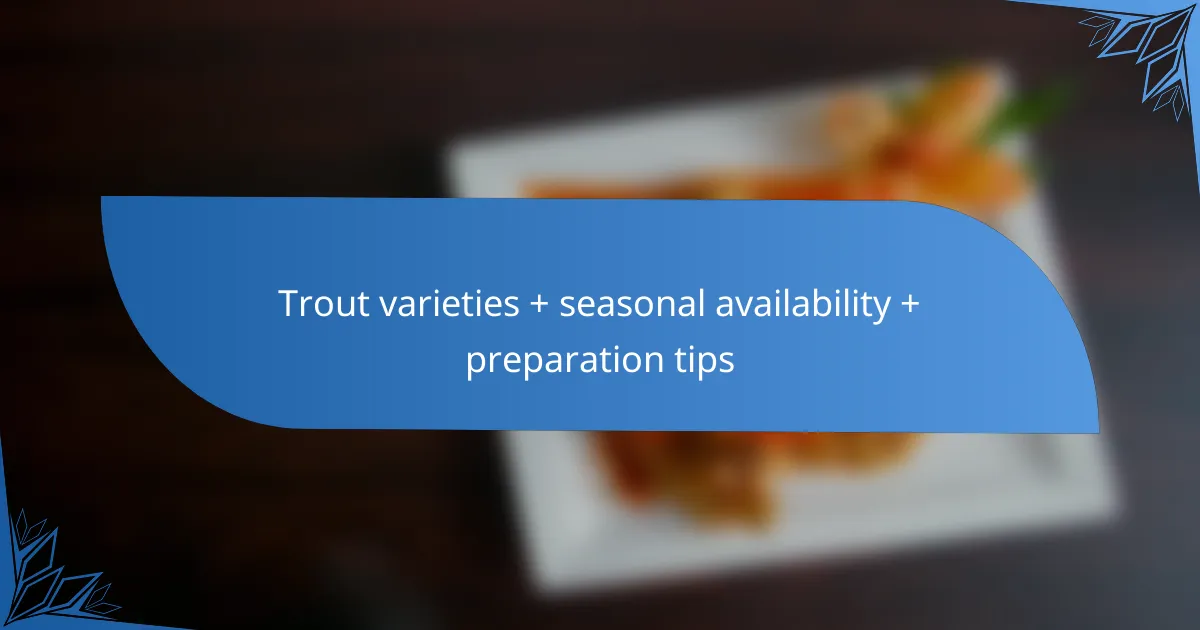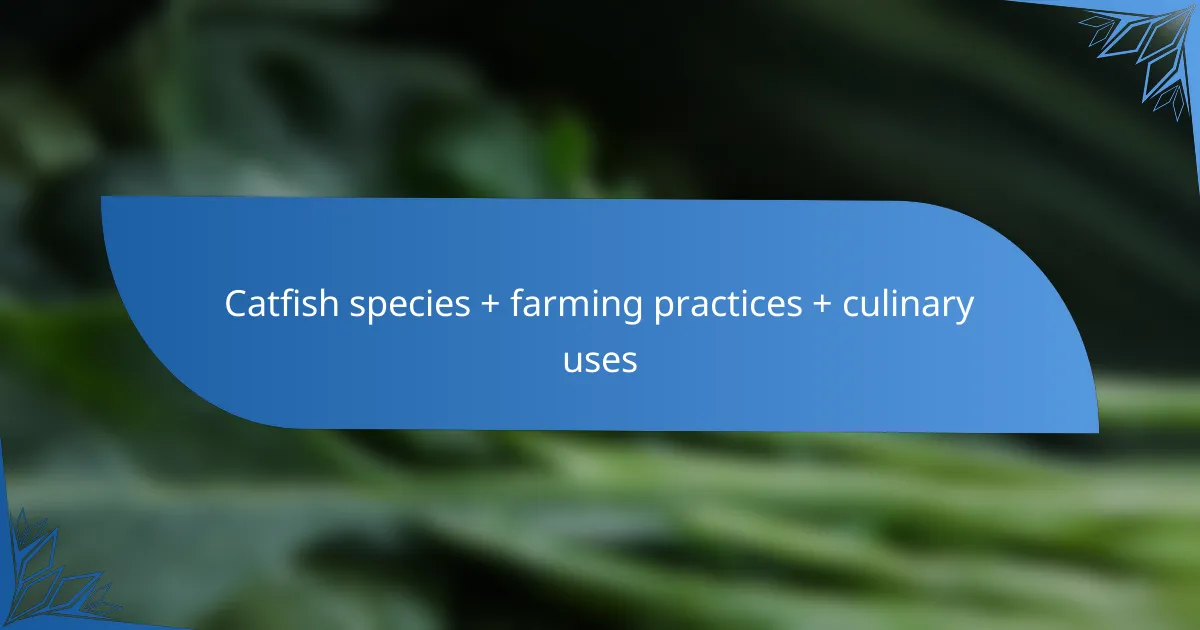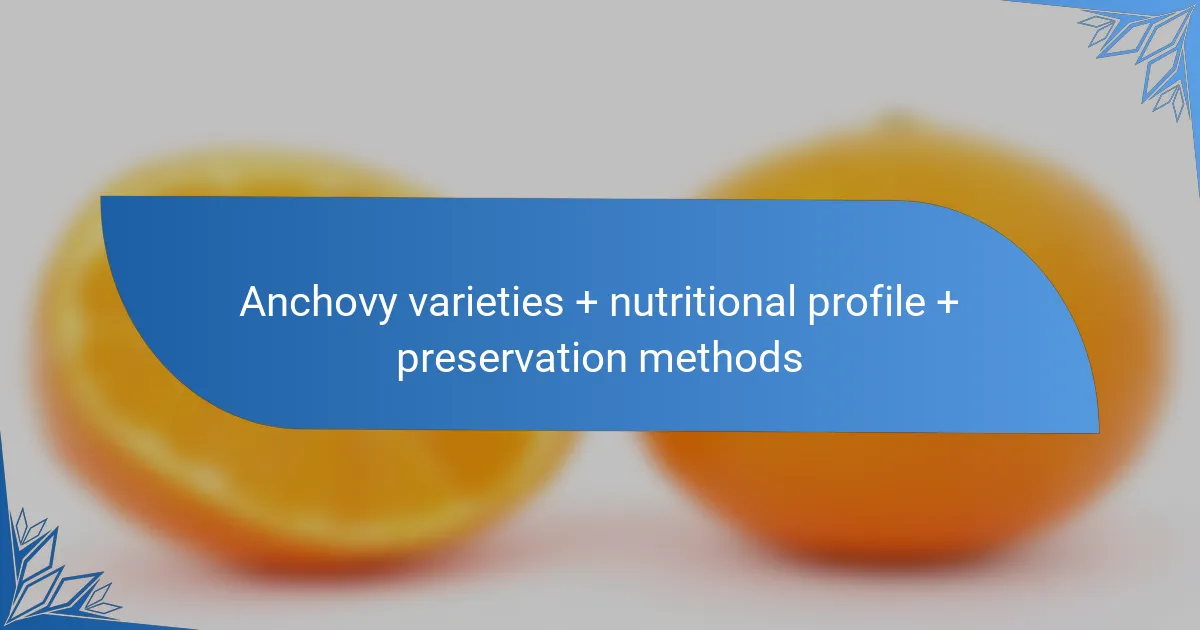
What are the different species of bass?
The different species of bass include Largemouth Bass, Smallmouth Bass, Spotted Bass, White Bass, and Striped Bass. Largemouth Bass are known for their large mouths and prefer warmer waters. Smallmouth Bass are typically found in cooler, clearer waters and are known for their fighting ability. Spotted Bass are similar to Largemouth but have distinct spots along their bodies. White Bass are smaller and often found in schools, making them popular among anglers. Striped Bass are known for their size and migratory behavior, often found in coastal waters. Each species has unique habitats and behaviors that influence fishing techniques and culinary applications.
How do the characteristics of each bass species differ?
The characteristics of each bass species differ in size, habitat, coloration, and behavior. Largemouth bass can grow up to 25 inches and prefer warm, shallow waters. They have a greenish body with a dark stripe along their sides. Smallmouth bass are typically smaller, reaching around 20 inches, and inhabit cooler, rocky environments. Their coloration includes a bronze body with vertical bars. Striped bass can grow significantly larger, often exceeding 30 inches, and are found in both freshwater and saltwater. They have a silver body with horizontal black stripes. Each species exhibits unique feeding habits and spawning behaviors, influencing fishing techniques and culinary applications. For example, largemouth bass are often targeted with topwater lures, while smallmouth bass respond well to jigs and crankbaits. Understanding these differences helps anglers select appropriate methods and techniques for successful fishing.
What are the unique attributes of largemouth bass?
Largemouth bass possess several unique attributes. They have a distinctive elongated body shape. Their coloration features a dark green or olive upper body with a lighter belly. Largemouth bass can grow to significant sizes, often reaching lengths of 20 to 30 inches. They are known for their large mouths, which can open wide to capture prey. This species prefers warm, shallow waters with ample vegetation. Largemouth bass are opportunistic feeders, consuming a varied diet that includes fish, insects, and crustaceans. They exhibit aggressive behavior, especially during spawning season. Their adaptability to different environments contributes to their widespread distribution across North America.
How does the habitat influence the behavior of smallmouth bass?
The habitat significantly influences the behavior of smallmouth bass. Smallmouth bass thrive in clear, cool waters with rocky substrates. Their behavior changes based on water temperature, depth, and structure. In warmer months, they tend to be more active and can be found in shallower areas. During colder months, they move to deeper waters to maintain optimal temperatures. The presence of vegetation and underwater structures impacts their feeding habits. Smallmouth bass often use these structures for ambushing prey. Additionally, water clarity affects their hunting strategies. In murky waters, they rely more on their lateral line to detect vibrations. Overall, habitat characteristics dictate their movement, feeding, and spawning behaviors.
What are the rare attributes of striped bass?
Striped bass possess rare attributes such as their ability to adapt to both freshwater and saltwater environments. This adaptability allows them to thrive in diverse habitats along the Atlantic coast. Additionally, they exhibit unique spawning behavior, traveling upstream to freshwater rivers for reproduction. Striped bass can also grow to impressive sizes, with some individuals exceeding 50 inches in length and weighing over 70 pounds. Their distinctive horizontal black stripes set them apart visually from other species. Furthermore, they are known for their strong fighting ability when hooked, making them a prized catch among anglers. These attributes contribute to their popularity in both recreational fishing and culinary applications.
Why is understanding bass species important for fishing?
Understanding bass species is crucial for effective fishing. Different species of bass, such as largemouth and smallmouth, have unique behaviors and habitat preferences. Knowledge of these differences enhances targeting strategies. For example, largemouth bass often inhabit warmer, shallow waters, while smallmouth bass prefer cooler, deeper areas. Recognizing these habitats allows anglers to select the right fishing locations. Additionally, understanding their feeding patterns can improve bait selection. Largemouth bass may respond better to topwater lures, while smallmouth bass might prefer jigs or soft plastics. This species-specific knowledge leads to higher catch rates and a more successful fishing experience.
How does species knowledge enhance fishing techniques?
Species knowledge enhances fishing techniques by informing anglers about the behavior and habitat of different bass species. Understanding the specific preferences of species like largemouth and smallmouth bass allows for targeted fishing strategies. Knowledge of seasonal patterns, such as spawning habits, improves catch rates during peak times. Familiarity with the dietary habits of bass helps in selecting appropriate bait and lures. For instance, knowing that bass are more likely to feed on certain prey during specific times of the day can lead to better fishing outcomes. Studies indicate that anglers who adapt their techniques based on species knowledge experience higher success rates. This strategic approach not only increases the quantity of fish caught but also enhances the overall fishing experience.
What role does species identification play in conservation?
Species identification is crucial for effective conservation efforts. It enables scientists to assess biodiversity accurately. Identifying species helps in understanding their ecological roles. This knowledge informs habitat protection and restoration strategies. Accurate species data guides policy-making and resource allocation. For example, the IUCN Red List relies on species identification to evaluate extinction risk. Conservation programs can target specific species for protection based on this information. Overall, species identification supports informed decision-making in conservation practices.

What fishing techniques are most effective for bass?
Effective fishing techniques for bass include lure fishing, live bait fishing, and fly fishing. Lure fishing involves using artificial baits that mimic prey. Popular lures for bass include spinnerbaits, crankbaits, and jigs. Live bait fishing uses natural bait such as worms or minnows. This method often attracts bass more effectively than artificial lures. Fly fishing targets bass with lightweight flies that imitate insects or small fish. Each technique can be effective depending on the conditions and bass behavior. For example, lure fishing is often best in warmer months when bass are more active. Live bait can be more effective in colder water when bass are less aggressive.
How can different fishing methods be applied to various bass species?
Different fishing methods can be effectively applied to various bass species based on their behaviors and habitats. For example, largemouth bass often respond well to techniques like flipping and pitching, which involve casting lures into heavy cover. This method targets their ambush feeding behavior. In contrast, smallmouth bass are typically found in rocky environments and respond better to techniques like drop-shotting and crankbait fishing. These methods mimic the natural forage in their habitats.
Additionally, spotted bass can be targeted using techniques such as topwater fishing during early mornings or late evenings. This method capitalizes on their aggressive feeding patterns. Understanding the specific habitat and feeding behavior of each bass species allows anglers to choose the most effective fishing methods. This targeted approach increases the likelihood of successful catches across different bass species.
What are the best practices for using lures when fishing for largemouth bass?
The best practices for using lures when fishing for largemouth bass include selecting the right type of lure, understanding the water conditions, and knowing the bass’s feeding habits. Popular lure types for largemouth bass are plastic worms, crankbaits, and spinnerbaits. Each lure type has specific conditions where it performs best. For instance, plastic worms excel in heavy cover, while crankbaits are effective in open water.
Timing is crucial; early morning and late afternoon are peak feeding times. Additionally, adjusting the retrieval speed can entice strikes. A slow, steady retrieve often works best, especially in warmer months. It’s also essential to vary the depth of the lure to match the bass’s location, which can change with water temperature and time of day.
Using a color that contrasts with the water can increase visibility and attract bass. In stained water, brighter colors are more effective, while natural colors work well in clear water. Lastly, always check local regulations regarding lure types and sizes to ensure compliance.
How does live baiting differ for smallmouth bass?
Live baiting for smallmouth bass differs from other species primarily in the type of bait used and the fishing techniques employed. Smallmouth bass tend to prefer smaller live baits like minnows, crayfish, and worms. These baits are often presented in a more natural manner, mimicking the movement of prey in the water.
The technique involves using a lighter tackle to allow for better sensitivity and control. Anglers often employ a slow retrieve to entice bites, as smallmouth bass are known for their cautious feeding behavior.
Research indicates that smallmouth bass are more likely to strike at live bait when it is presented near rocky structures or submerged vegetation, which are common habitats for this species. This specific approach enhances the likelihood of successfully catching smallmouth bass compared to using live bait for other fish species.
What factors influence the choice of fishing technique?
The choice of fishing technique is influenced by several factors. These factors include the type of fish targeted, environmental conditions, and available equipment. Different bass species may require specific techniques for effective capture. For instance, largemouth bass often thrive in weedy areas, making techniques like flipping or pitching more effective. Weather conditions, such as wind and temperature, can also dictate which methods are most successful. Additionally, the time of year impacts fish behavior, influencing technique choice. Anglers may prefer techniques like topwater fishing in warmer months when bass are more active. Lastly, personal skill level and experience play a crucial role in selecting a fishing technique. More experienced anglers may employ advanced techniques, while beginners might stick to simpler methods.
How does weather affect bass fishing strategies?
Weather significantly influences bass fishing strategies. Temperature changes affect bass behavior and feeding patterns. Warmer weather often leads to increased bass activity and feeding. Conversely, colder temperatures can slow down their metabolism. Overcast days may enhance fishing success, as bass tend to roam more freely. Rain can also improve fishing conditions by increasing water levels and oxygen. Wind can create surface disturbances, making bass more aggressive. Understanding these weather impacts allows anglers to adjust their techniques effectively.
What time of day is best for bass fishing and why?
The best time of day for bass fishing is early morning and late afternoon. During these times, bass are more active and feeding near the surface. Water temperatures are cooler, encouraging bass to hunt for food. Additionally, low light conditions provide cover for bass, making them less cautious. Studies show that bass are more likely to bite during these periods. Research indicates that early morning and late afternoon yield higher catch rates. This pattern is consistent across various water bodies and seasons.

What culinary applications are there for bass?
Bass is a versatile fish used in various culinary applications. It can be grilled, baked, fried, or steamed. Each cooking method enhances its mild flavor. Grilling bass gives it a smoky taste and crispy skin. Baking bass retains moisture and allows for the addition of herbs and spices. Frying bass creates a crunchy texture, often paired with side dishes. Steaming bass preserves its delicate flavor and nutrients. Additionally, bass can be used in soups and stews, adding depth to the broth. It is also popular in sushi and sashimi preparations. These diverse applications highlight bass’s adaptability in the kitchen.
How can bass be prepared and cooked in various styles?
Bass can be prepared and cooked in various styles, including grilling, baking, frying, and steaming. Grilling bass enhances its natural flavors. It typically requires marinating the fish beforehand for added taste. Baking bass is a healthy option, often done with herbs and spices. Frying bass yields a crispy texture, commonly using a breading or batter. Steaming bass preserves moisture and nutrients, often accompanied by vegetables. Each method highlights the fish’s delicate flavor while providing different textures. These preparation styles allow for versatility in culinary applications.
What are popular recipes for grilled bass?
Popular recipes for grilled bass include lemon herb grilled bass, garlic butter grilled bass, and spicy Cajun grilled bass. Lemon herb grilled bass features a marinade of lemon juice, olive oil, garlic, and fresh herbs. This recipe enhances the fish’s natural flavors. Garlic butter grilled bass incorporates melted butter, minced garlic, and parsley for richness. This combination adds a savory depth to the dish. Spicy Cajun grilled bass uses a mix of Cajun spices to create a bold flavor profile. Each recipe showcases the versatility of bass and highlights its delicate texture. Grilled bass is often served with sides like grilled vegetables or rice for a complete meal.
How does the cooking method affect the flavor of bass?
The cooking method significantly affects the flavor of bass. Different methods impart distinct tastes and textures. Grilling enhances the natural smokiness of the fish. Baking retains moisture, resulting in a milder flavor. Frying creates a crispy exterior, adding richness. Poaching allows the delicate flavor to shine without overpowering it. Each technique influences the overall dining experience. For instance, studies show that grilling can increase the perception of umami in fish.
What nutritional benefits does bass offer?
Bass offers high-quality protein and essential nutrients. It is rich in omega-3 fatty acids, which promote heart health. Bass also contains vitamins such as B12, which supports nerve function. Additionally, it provides selenium, an antioxidant that helps protect cells. A 3-ounce serving of bass typically contains about 22 grams of protein. This fish is low in calories, making it a healthy choice for weight management. Bass is also a good source of phosphorus, important for bone health. These nutritional benefits make bass a valuable addition to a balanced diet.
How does the nutritional profile of bass compare to other fish?
Bass has a nutritional profile that is generally high in protein and low in fat compared to many other fish. For example, a 3-ounce serving of bass contains approximately 22 grams of protein and only 2.5 grams of fat. This makes bass a lean source of protein. In contrast, fatty fish like salmon can have over 13 grams of fat in the same serving size. Additionally, bass is rich in essential nutrients such as omega-3 fatty acids, though it contains less than oily fish like mackerel or sardines. Bass also provides vitamins such as B12 and D, similar to other fish varieties. Overall, while bass is nutritious, its fat content and omega-3 levels are lower compared to more oily fish.
What are the health benefits of consuming bass regularly?
Consuming bass regularly provides several health benefits. Bass is a rich source of high-quality protein, essential for muscle growth and repair. It contains omega-3 fatty acids, which support heart health and reduce inflammation. Bass is also low in calories and saturated fat, making it a healthy choice for weight management. Additionally, it provides important vitamins and minerals, including vitamin B12, which is crucial for nerve function and energy production. Regular consumption of bass can contribute to overall well-being and a balanced diet.
What are some tips for preparing bass dishes at home?
To prepare bass dishes at home, start with fresh bass fillets. Freshness ensures better flavor and texture. Clean the fillets thoroughly to remove any scales or bones. Season the fish with salt, pepper, and herbs for enhanced taste. Cooking methods such as grilling, baking, or pan-searing work well for bass. For grilling, preheat the grill and oil the grates to prevent sticking. Baking requires a preheated oven at 375°F for about 20 minutes. Pan-searing should be done on medium-high heat for about 4-5 minutes per side. Use a meat thermometer to ensure the internal temperature reaches 145°F for safety. Pair bass with complementary sides like vegetables or rice for a balanced meal.
The article focuses on bass species, including Largemouth, Smallmouth, Spotted, White, and Striped Bass, detailing their unique attributes, habitats, and behaviors. It explores effective fishing techniques tailored to each species, emphasizing the importance of understanding these differences for successful angling. Additionally, the article discusses various culinary applications for bass, highlighting preparation methods and nutritional benefits. Overall, it provides comprehensive insights into bass fishing and cooking, enhancing both the fishing experience and culinary enjoyment.



